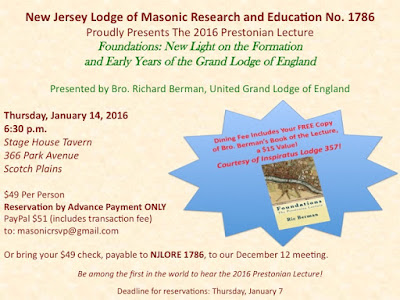With 60° weather during Thanksgiving weekend in New York City, one might forget that December is only days away. There is so much to occupy our thoughts at year’s end, independent of current events and the unexpected happenings of daily life, that perhaps you may be interested in these opportunities to focus the mind and, maybe, form a few questions too.
 On Saturday, December 5, Builders of the Adytum will host its Qabalistic Christmas Ritual at Masonic Hall (71 West 23rd Street) in Manhattan. Two o’clock inside the Chapter Room on 12.
On Saturday, December 5, Builders of the Adytum will host its Qabalistic Christmas Ritual at Masonic Hall (71 West 23rd Street) in Manhattan. Two o’clock inside the Chapter Room on 12.BOTA members, guests, and the public are invited to participate in the traditional celebration of light and the holy season as written by Rev. Ann Davies. (This is a special annual event not to be confused with the regular fourth Saturday meeting of the pronaos.)
If you are in the mood for music, the School of Practical Philosophy will host its Concert Matinee at three o’clock in the Great Hall of St. Jean Baptiste Catholic Church (184 East 76th Street) in Manhattan. Mozart, Bach, Beethoven, and more for just 25 bucks. Register here.
On Saturday, December 12, the Rosicrucian Order will host “Learn About the Martinist Tradition” at 1 p.m. at the Rosicrucian Cultural Center (2303 Adam Clayton Powell, Jr. Blvd.) in Manhattan. From the publicity:
Focusing on the works of Louis-Claude de Saint-Martin, we will explore the foundations of Martinism, a mystical movement deeply rooted in the Western Esoteric Tradition. The facilitator of the discussion will be Julian Johnson, long-time member of both the Rosicrucian Order and the Traditional Martinist Order.
Also on Saturday the 12th, the Gurdjieff Foundation of New York will offer another session in its introductory series titled “The Search for Meaning and Purpose in Our Lives.” The subject that afternoon will be “What are you?”
The Gurdjieff Foundation now meets at Quest Bookshop at the Theosophical Society, located at 240 East 53rd Street (between Second and Third avenues) in Manhattan. Starts at 3 p.m.
For more information, send an e-mail here.
 |
| Click to enlarge. |
New York Open Center (22 East 30th Street, Manhattan) will have a three-lecture program on “The Way of the Mystic: Insights, Wisdom, and Practices of the Masters.” 8 to 10 p.m. on Tuesdays, December 1, 8, and 15. From the publicity:
What is mysticism? What are mystical experiences and under what circumstances do they occur? In this three-week series, Jon Mundy will first explain what mysticism is, and then identify many of the characteristics of mystical experiences including: the loss of subject/object identity, timelessness, egolessness and experiences of wonder, awe, reverence, freedom, happiness, and bliss. He will then delve into the lives, experiences, and teachings of a number of history’s greatest mystics and, most importantly, describe meditative and other practices that can lead to the exalted states they describe.
New York Open Center also brings back Mr. Robert Place for another “Introduction to the Tarot” series of sessions on Wednesdays, December 2, 9, and 16, from 8 to 10 p.m. From the publicity:
An Introduction to the Tarot:
Guidance and Wisdom for Our Spiritual Journey
The Tarot, ostensibly a deck of decorated cards, is in fact a symbolic system whose images express Pythagorean, Platonic and Hermetic mystical ideas. Once one grasps the Tarot’s philosophy and structure, the cards can be used as an intuitive device to connect with one's inner wisdom.
The Tarot, ostensibly a deck of decorated cards, is in fact a symbolic system whose images express Pythagorean, Platonic and Hermetic mystical ideas. Once one grasps the Tarot’s philosophy and structure, the cards can be used as an intuitive device to connect with one’s inner wisdom. In this class we will study the symbolism of the Tarot as its Italian Renaissance creators intended, come to understand its spiritual messages, and then learn and practice techniques that develop our intuition and enable us to read the cards as messages from our Higher Self.
Note: you will need a Tarot deck for this class, preferably The Alchemical Tarot or the Tarot of the Sevenfold Mystery by Robert Place, or the Waite-Smith Tarot. It is also recommended that you have one of Place’s books as a text, Alchemy and the Tarot or the Tarot: History, Symbolism, and Divination.
Members: $105/Non-members: $115
If you’re baffled by the names of various tarot decks, please understand there is a limitless variety of decks. There probably is a Simpsons tarot deck. A new Masonic deck is in the works, I’m told. Today I learned of the Hillbilly deck, which has this variation of The Fool:
But the aforementioned Rider-Waite deck surely is the most common and familiar.
And the month of December ends and the New Year will begin with the Anthroposophical Society’s Holy Nights programming. No announcements there yet, but I’ll post the news on The Magpie when it becomes available.

















































































